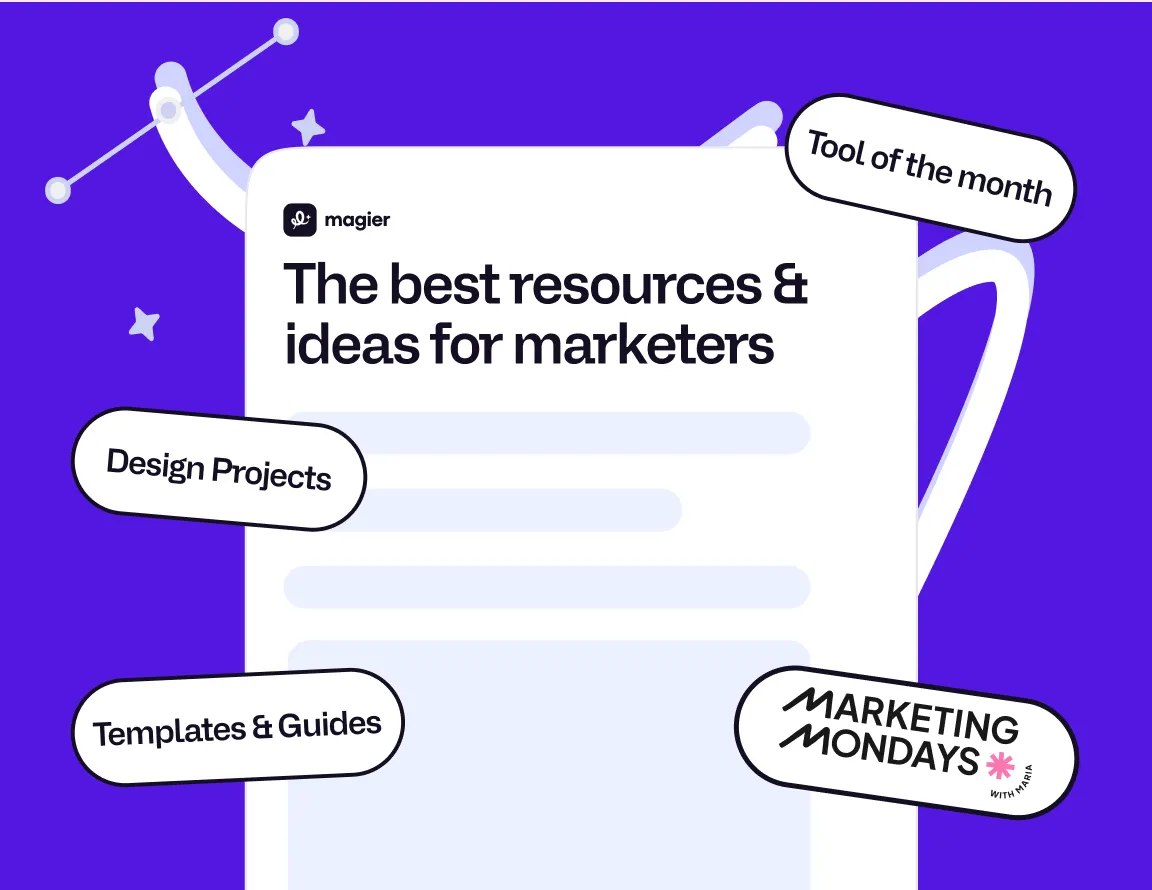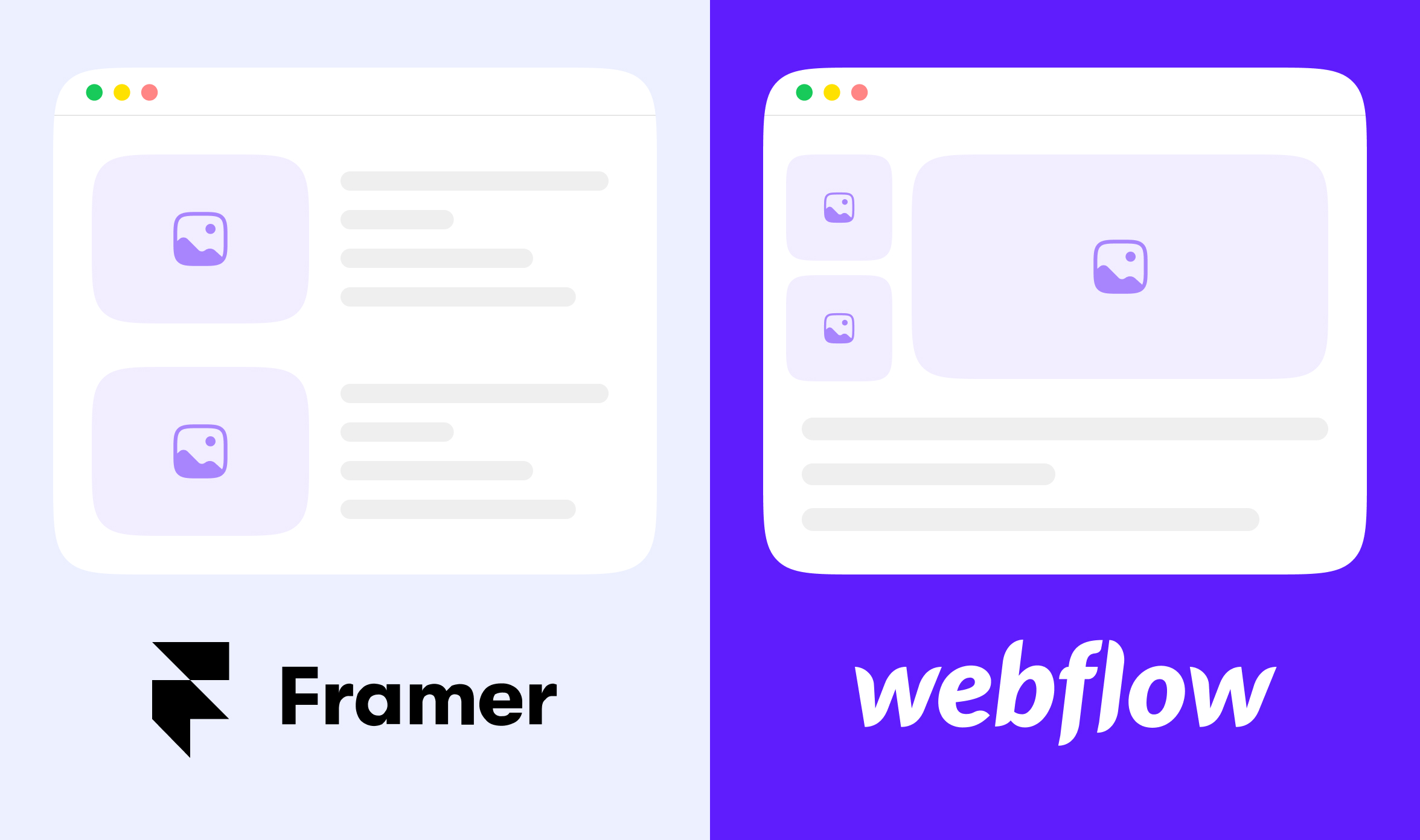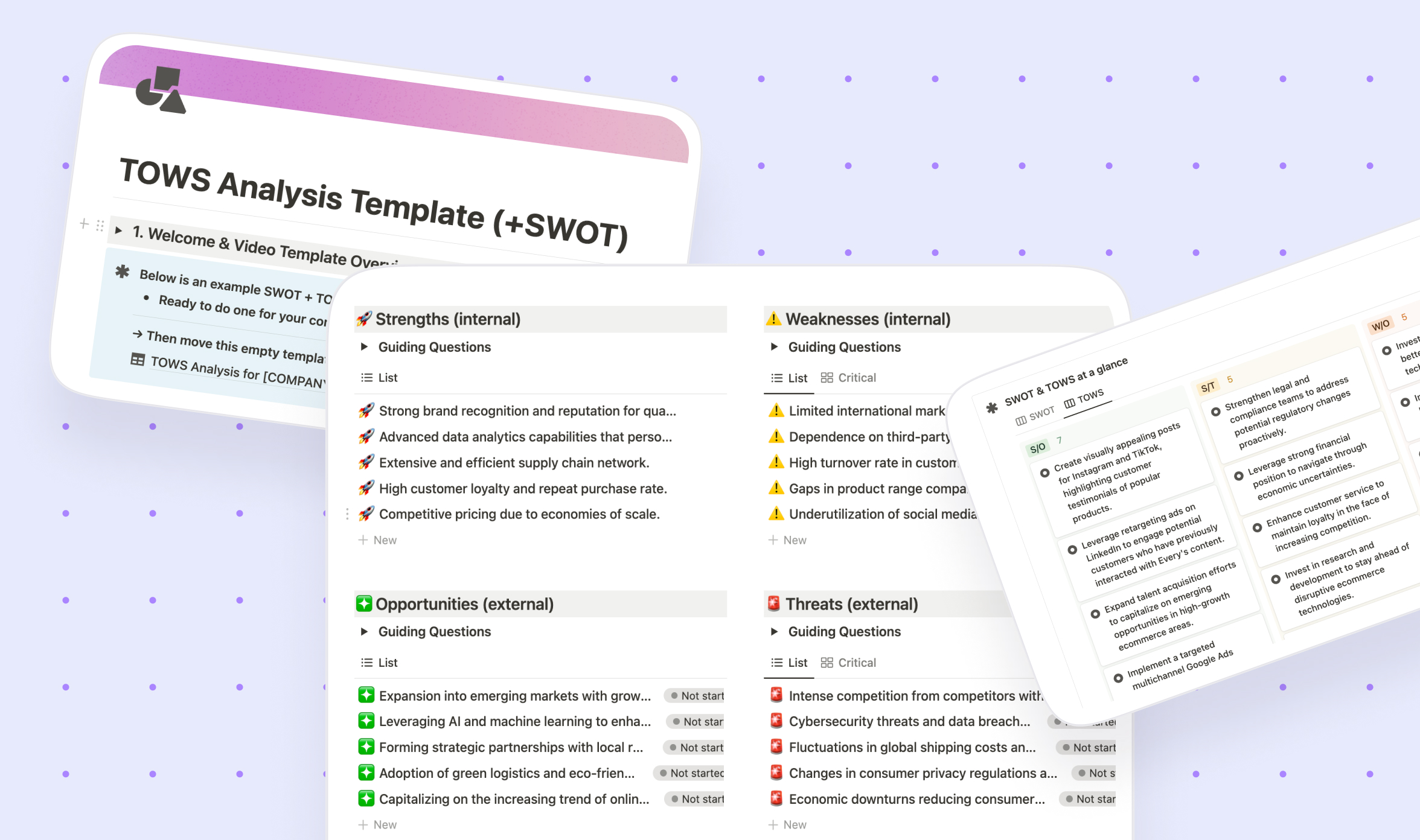

Author
Published
April 16, 2025
Reading time
5 min
Content
H2
Share
Looking for design support?
Hire top designers for a fixed monthly rate.
Webflow for Marketers: A Step-by-Step Beginner's Guide (2025)
If you're a marketer working with Webflow (or considering it), this is the only guide you need. Whether you're switching from WordPress, setting up your first site, or just want more autonomy over your marketing site without pinging developers every time you need to update a headline — you're in the right place.
This guide will break Webflow down into simple, clear steps. We'll cover exactly how marketers can use Webflow to:
- Launch and update content without devs
- Optimize for SEO
- Set up CMS for blog posts, testimonials, case studies, and more
- Integrate with tools like HubSpot, GA4, and Meta Pixel
Let's dive into the blog post, but if you prefer to watch the video, you can find it here:
What Is Webflow (And Why Marketers Love It)
Webflow is a no-code website builder. It lets you design, build, and launch fully responsive websites visually — without writing a single line of code.
Why It Matters for Marketers
- Visual editing: See changes as you make them
- No dev dependency: Update headlines, images, blog posts anytime
- Built-in SEO tools: Edit meta descriptions, sitemaps, and more
- Secure & hosted: No plugin updates or security nightmares like with WordPress
- Fast: High-performance sites that Google loves
Real-World Example:
At magier, we manage client websites in Webflow and even run our own site there. This lets our marketing team publish content fast, run experiments, and skip the endless dev backlog.
Step 1: Know the Two Sides of Webflow
There are two main interfaces in Webflow:
1. Designer
Where pages are built and styled. This is where devs/designers work.
2. Editor
Where marketers can edit content (text, images, blog posts) easily.
If you just want to change copy or publish a new blog post, you probably only need the Editor.
Step 2: Navigating the Webflow Dashboard
Once you log in to Webflow, you land in the dashboard. Here’s what you'll see:
- Projects: Your company websites
- Workspace Settings: Team access, billing, etc.
- Project Settings: Domains, forms, SEO settings, and custom code
Tip: Webflow uses Workspace Plans and Site Plans. Workspace is for your team access. Site Plan is for each live site.
Step 3: Publishing Content Without a Developer
Marketers can publish new content in Webflow using the Editor. Here’s how:
To Edit Existing Content:
- Enter the Webflow Editor (yourdomain.com?edit=true)
- Click any text or image and edit it directly
- Click "Publish" to push to staging or live
To Add a New Blog Post:
- In the Editor, go to Collections > Blog
- Click "New Blog Post"
- Fill in the fields: Title, slug, image, author, body text
- Hit Publish
You don’t need to design anything — the layout is already set up.
Step 4: Understanding Static vs Dynamic Pages
Static Pages
- Hardcoded pages like "About Us," "Contact," etc.
- Edited directly in the Designer
CMS (Dynamic) Pages
- Templates filled with data (e.g. blog posts, jobs, testimonials)
- Managed via CMS Collections
Pro tip: Ask your dev to set up dynamic collections for anything you update regularly (testimonials, blog, jobs, etc.)
Step 5: Managing CMS Collections
CMS = Content Management System.
Collections are where you store content like:
- Blog posts
- Job listings
- Case studies
- Testimonials
- Freebies, tools, swipe files, etc.
How To Use It:
- Go to CMS tab in Designer or Editor
- Select a Collection (e.g. "Testimonials")
- Add or edit items
All new items will show up automatically on the front-end wherever that Collection is used.
Step 6: Basic On-Page SEO in Webflow
You don’t need a plugin. It’s all built-in.
On Static Pages:
- Go to Designer > Pages > (choose page)
- Update:
- Title tag
- Meta description
- OG title, description, and image
- URL slug (with redirect option if changed)
On CMS Items:
- Set meta title and description directly in the CMS item form
- Add alt text for images like: "Webflow CMS for Marketers",
or "SEO friendly website setup"
Step 7: Adding and Managing Integrations
Webflow makes it easy to add marketing tools:
Page-Level Scripts
- Add GA, Meta Pixel, Hotjar, etc. in the page settings
Site-Wide Scripts
- Go to Project Settings > Custom Code
- Paste scripts in the
<head>or</body>tag fields
Popular integrations:
- HubSpot (native integration)
- Google Analytics 4
- Meta Pixel / TikTok Pixel
- Hotjar / Clarity
- Tag Manager
All external links should open in a new tab and use rel="nofollow" when embedded in Webflow.
Step 8: Image Management & Best Practices
- Upload images in the Assets panel
- Use descriptive file names (e.g.
team-photo-2025.jpg) - Add alt text for SEO and accessibility
- Resize images to 1200x630px when possible
- Suggested alt texts:
Webflow Dashboard for Marketing, Edit Webflow blog post,Responsive Marketing Site Layout
Step 9: Publishing Updates
Once edits are done:
- Click Publish in the top right of the Editor or Designer
- Choose Staging (preview link) or Production (live site)
Tip: Always preview on staging before pushing to live
Recap: Why Marketers Should Learn Webflow
- Autonomy to publish content fast
- No dev dependency for small updates
- Better SEO control
- Faster go-to-market speed
At magier, we help marketers build powerful websites with Webflow. Need help setting up dynamic content or making your marketing site easier to manage?
FAQ: Common Webflow Questions from Marketers
1. Do I need to know how to code to use Webflow?
Nope. The Editor is completely no-code. If you're working with a designer or dev, they handle the Designer side.
2. Can I create landing pages by myself in Webflow?
Yes, if templates are set up in advance. Or we can help you build flexible landing page components.
3. Is Webflow good for SEO?
Yes. Title tags, meta descriptions, OG data, and alt text are all built-in. Plus it's fast and secure.
4. How do I integrate tools like HubSpot or GA4?
Use either the site settings (for global scripts) or individual page settings (for specific tools).
5. Can I update my website without breaking the layout?
As long as you're using the Editor or editing CMS content, yes. Just avoid changing layout classes in the Designer.
Marketing &
Design Newsletter
Design Newsletter
Subscribe to our newsletter and get cutting-edge marketing strategies, design inspiration, and exclusive tips delivered straight to your inbox.

Continue reading

Webflow
Startup
Design
Webflow vs Framer: Which Web Builder is Best For You in 2025?
Webflow or Framer? Let’s find the best web builder for your business, portfolio, or marketing campaign! We break down key differences, pricing, and features.

Marketing
Startup
Marketing Strategy SWOT Analysis: A Complete Guide for 2025 (+Free Template)
Learn how to identify strengths, weaknesses, opportunities & threats and go beyond with a TOWS analysis. Plus, grab a free Notion template!

Marketing
Startup
80+ Digital Marketing Conferences & Startup Events for 2025 (Calendar)
Discover must-visit digital marketing conferences of 2025. Get our free event calendar to plan your year and never miss important industry events.
















